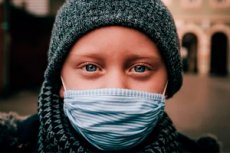New publications
Coronavirus infection can take up residence in the mouth
Last reviewed: 02.07.2025

All iLive content is medically reviewed or fact checked to ensure as much factual accuracy as possible.
We have strict sourcing guidelines and only link to reputable media sites, academic research institutions and, whenever possible, medically peer reviewed studies. Note that the numbers in parentheses ([1], [2], etc.) are clickable links to these studies.
If you feel that any of our content is inaccurate, out-of-date, or otherwise questionable, please select it and press Ctrl + Enter.

The COVID-19 coronavirus penetrates into the gingival and glandular cellular structures, after which it remains there and develops comfortably.
Previously, the infection had already been detected in lung and bronchial cells, as well as in the structures of the intestine, brain, and kidneys. Now, specialists from the American National Institutes of Health have been able to detect the pathogen in the oral cavity as well, as they wrote on the pages of Nature Medicine.
It is a known fact that SARS-Cov-2 is found in salivary secretions. Therefore, the study of this secretion is often used to diagnose coronavirus infection, along with a nasopharyngeal swab. But until now, scientists did not fully understand the mechanism by which the virus enters the salivary fluid. At first, it was assumed that it enters the saliva from the nasopharynx, or together with sputum secretions from the bronchopulmonary system. However, coronavirus was found in salivary secretions, including in those patients who did not have any signs of respiratory tract damage, and the infection was asymptomatic.
In order to get inside the cell, the coronavirus needs a pair of cellular proteins: TMPRSS2 and ACE2. During interaction with these proteins, which are localized on the outer membrane of the cell, the infectious agent discovers the opportunity to get into it. Experts have found that both the first and second proteins have genes activated in individual cells of the mucous gum tissue and glands that produce saliva. Such activity is in no way inferior to the activity of genes in the nasopharyngeal structures, and this is where the pathogen gets without any particular difficulties.
By conducting analyses, scientists were able to confirm that the coronavirus can live in the glandular tissue responsible for salivation. During the study, tissue samples were taken from patients with coronavirus infection. Researchers found a large amount of viral RNA in them, which led to the conclusion that the COVID-19 pathogen not only enters the glandular cells, but also develops and multiplies there quite comfortably.
The scientists then studied the case histories of a large group of patients with overt and asymptomatic coronavirus infection. It was found that the virus penetrated into the cells of the oral cavity and caused the loss of taste and smell. It turns out that the virus used the gum and glandular tissues as an additional storage and dissemination reservoir. However, in some patients, the oral tissues were not filled with the pathogen, which indicates the need to search for factors that contribute to the settlement of the infection. Research on this issue is ongoing.
Original source of information: journal Nature
